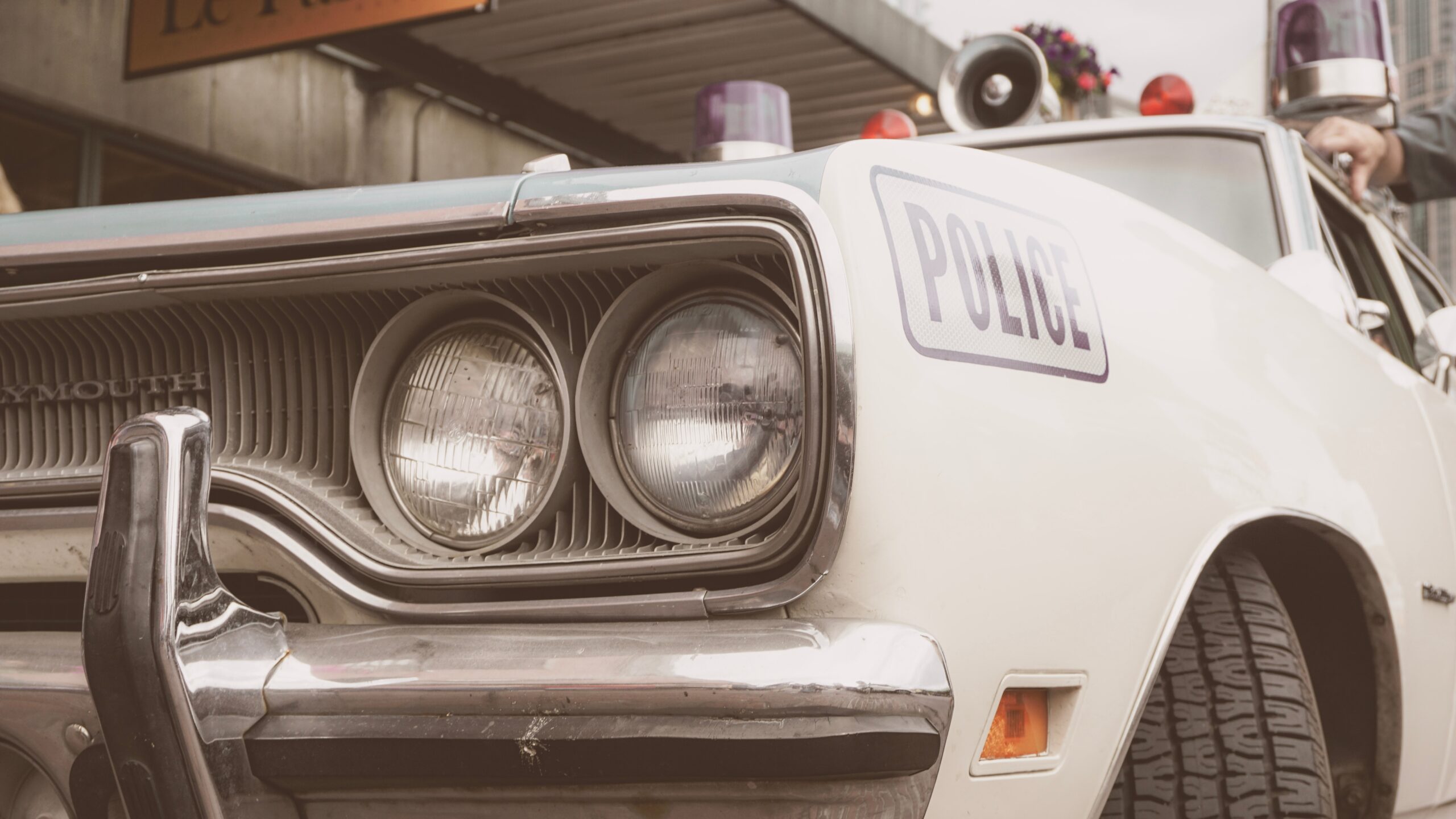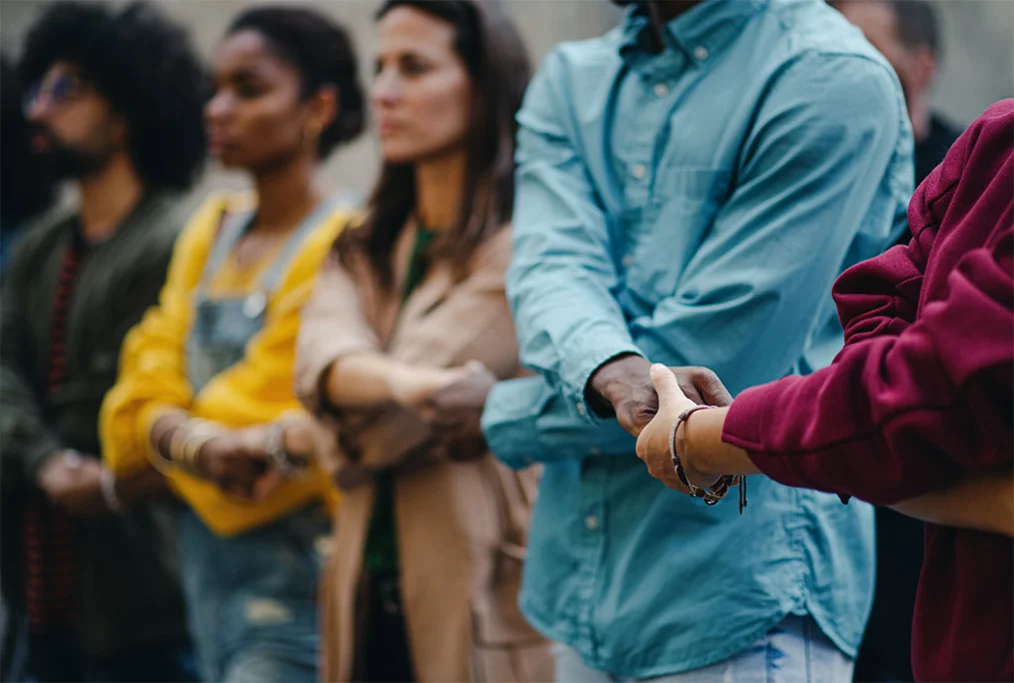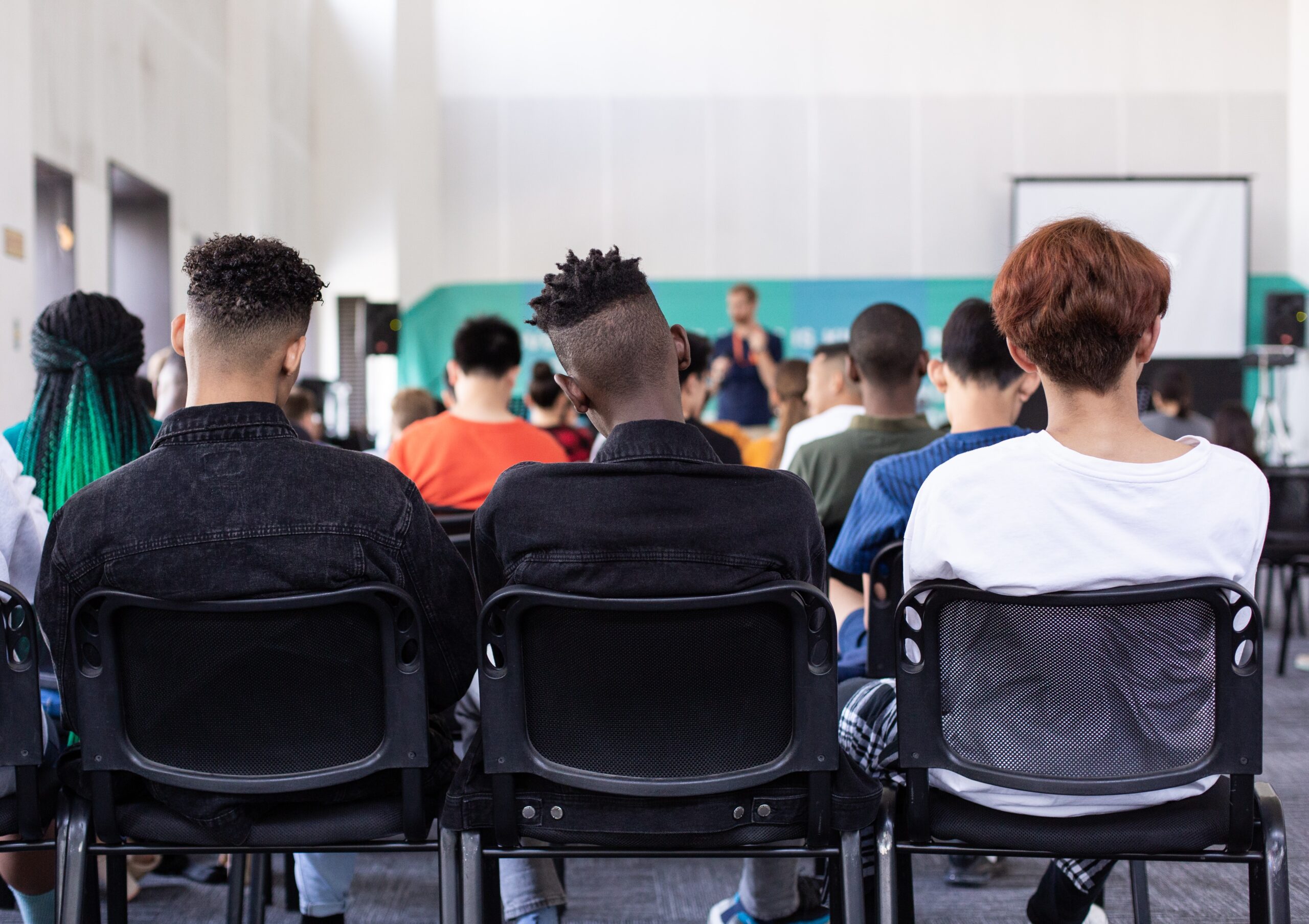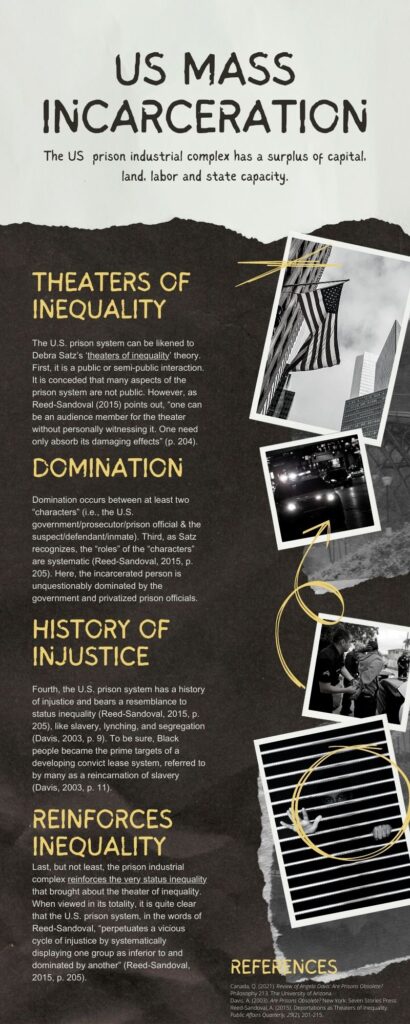Has Police Misconduct and Excessive Use of Force in the US Decrease Post-George Floyd?
Has Police Misconduct and Excessive Use of Force in the US Decrease Post-George Floyd?
It has been nearly 3-years since the murder of George Floyd and there are still no signs from the US Senate that it intends to combat police excessive use of force, racial bias in policing and police misconduct.
Excessive force against African Americans has been a persistent problem in the US. Due to law enforcement’s discriminatory treatment against marginalized communities, the House of Representatives introduced the George Floyd Justice Policing Act, the Eric Garner Excessive Use of Force Prevention Act, the Stop Militarizing Law Enforcement Act and the End Racial and Religious Profiling Act, all of which has either been stalled in its introductory phase or has not made it pass the Senate.
At the time of this article, 42% of individuals who identify as African American or Black reported personal discrimination by American law enforcement. There are eleven specific cases that breathe more life into this harrowing statistic.
Amaurie Johnson
In 2021, La Mesa police officer Matthew Dages falsely arrested Amaurie Johnson. Dages alleged that Johnson assaulted him during the encounter. However, video footage of the incident did not show Johnson assaulting Dages. As a result, Johnson sued the city on grounds of racial discrimination, excessive force, and wrongful imprisonment.
After footage of the incident went viral, the La Mesa police department decided not charge Johnson. However, a US jury still acquitted the police officer,[1] even though video evidence did not support Dages version of events.
In La Mesa, Whites make up 54.4% of the population, followed by Hispanics, who make 25.8%. Black American comprise of 7.3% of the population.[2]
Shane Lee Brown
In 2022, Las Vegas police officers misidentified Shane Lee Brown for a suspect of a different race and twice his age. Although Brown continued to explain to police that he was not the suspect, law enforcement officers held Brown in pre-trial custody for eight days.[3]
Michael Jennings
During the same year, a Childersburg officer wrongfully arrested Michael Jennings while he was watering the neighbor’s flowers. Under Alabama law, an officer “may stop any person abroad in a public place.”[4] Nonetheless, Jennings was not in a public place; he was on private property. This case demonstrates that even if a citizen is not committing, has not committed or is not about to commit a crime, the officer may still racially profile an individual if they feel they are committing, has committed or is about to commit a crime.
Johnathan William Ellish
Two months after the Jennings incident, East Ridge police officers used excessive force on Johnathan Ellish. Bystanders who recorded the incident on their cell-phones assert the Tennessee police officers arrested them in retaliation for documenting the Ellish incident.
Jamie Satterfield also reported that East Ridge police pushed a woman’s face onto a police cruiser and arrested her for disorderly conduct after she recorded them shooting an unarmed woman with a stun gun.[5] Satterfield stated that camera footage showed police officers using a stun gun on unarmed citizens within minutes of encountering them.[6]
It is worth mentioning here that White allies are often brutalized in the US for coming to the defense of African Americans. One need only refer to the case of Ronald Cummins, who East Ridge police officers’ assaulted and falsely arrested when he questioned their ill-treatment of a Black motorist in 2021.
Eddie Irizzary
On August 14, 2023, Philadelphia police officer, Mark Dial, shot and killed Eddie Irizzary. Philadelphia Police Department initially claimed that Irizzary lunged at police officers with a knife.[7] However, surveillance footage demonstrates that never happened. The surveillance showed Dial approaching Irizzary’s vehicle with his gun drawn. Although Irizzary remained in his vehicle with his window up, Dial fired six shots into the driver’s seat.
US Law Enforcement’s Violence Against Women
Safiya Satchel
In 2020, Jordy Yanes Martel, a Miami-Dade police officer abused his authority when he forcibly removed Safiya Satchel out of her vehicle and slammed her to the ground. He then knelt on her neck and tased her stomach, which was carrying her unborn child. According to reports, Satchel had miscarried, though it’s unclear if this was the result of the unreasonable use force.
Fort Lauderdale Victim
A Fort Lauderdale police officer charged an un-named Black woman with battery after she elected not to get out of her vehicle. Body-worn camera footage shows the woman waiting in her and talking on the phone to her mother. When the Fort Lauderdale officer walks up, he demands that the woman step out of her car. However, she refused. This led to the police officer opening the driver’s door. He then pulled the woman out of the car and threw her to the ground. The woman asserted that the police officer struck her in the face repeatedly, causing bruises to her eyes and face.[8]
Nerilla Laurent
In June 2023, Boca Raton police received a “domestic situation” call, where a couple’s car stalled on the road. Boca Raton officer Matthew McNichol forced Nerilla, a pregnant woman, to the ground and put his knee on her back. He then placed Nerilla in a heated patrol car and did not let down the windows.[9] Nerilla said to McNichol that she was coughing because she could not breathe. Nerilla was charged with resisting an officer without violence. Although Nerilla may have had an active warrant for driving with a suspended license, this fact alone does not justify the forced McNichol used on her.
Los Angeles Woman
The same month, a Los Angeles County Sheriff’s deputy threw an un-named Black woman to the ground after she recorded the sheriff’s interaction with her husband.[10] Bystander video shows the deputy hurling the woman the ground, placing his knee on her neck, and pepper spraying her face.
Ta’Kiya Young
On August 24, 2023, Ta’Kiya Young walked into a Kroger’s store, shoplifted multiple bottles of alcohol, and was shot by Blendon Township police officers. This is yet another case that raises the question as to whether shoplifting in the U.S. in punishable by death.
While I personally do not condone Young’s actions, this was not a situation that called for the deadly use force. First, Kroger had surveillance of the alleged suspect shoplifting the alcohol, which means Blendon Township officers had a physical description of who would later be identified as Young. Second, authorities released surveillance footage of the parking lot where the incident transpired, which illustrates they had a description of her license plate.
Body-worn camera footage shows Young attempted to drive away from the scene—likely out of fear and to evade consequences. If it were to evade consequences, it is abundantly clear that the Blendon Township officer escalated the incident when he stepped in front of Young’s vehicle.
Theoretically speaking, if Young drove away with the merchandise, Blendon Township officers could have charged her with fleeing the scene and shoplifting. A warrant could have been issued and the matter would have been dealt with in court. In other words, Young and her unborn child would still be alive today. But as we have seen, the officers chose to escalate the incident and used deadly force on a woman whose crime cost less than $200.00. The Human Rights Committee has articulated crimes not resulting and intentionally in death, such as economic crimes, can never serve as the basis for the imposition of the death penalty under Article 6 of the International Covenant on Civil and Political Rights.
Oniqua Morris
During the weekend of September 3, 2023, Morgan City police officers responded to a confrontation between two men. Oniqua Morris, an individual in the parking lot, made attempts to de-escalate the altercation by pulling one of the men away, but officer David Leonard Jr. forcefully shoved her to the ground. He then proceeded to shove another Black woman and pepper sprayed two African American men.
The Violence Against Women Act
President Biden signed into the law the Violence Against Women Reauthorization Act of 2022 (VAWA) which protects women against domestic violence, sexual assault, dating violence and stalking.[11] However, the VAWA does not establish a federal civil cause of action for victims of violence perpetrated by police officers.
Gender-based violence inhibits women’s ability to enjoy rights and freedoms on a basis of equality with men.[12] Article 8 of the Convention for the Elimination of Discrimination Against Women applies to violence perpetrated by public authorities, such as police officers. Police brutality undoubtedly breaches the US’s obligation to protect under international human rights law. To be sure, international human rights courts have found that a State’s failure to act with due diligence to protect women from violence constitutes a form of discrimination that denies women their right to equality before the law.[13]
Use of Force and At-Risk Groups
Based on an earlier report, nearly 90% of the excessive force incidents identified by the Department of Justice involved excessive force used against African Americans.[14] In the 880 cases reviewed, the DOJ found African Americans accounted for some 88% of the subjects of non-deadly force used by BPD officers. In June 2023, the DOJ conceded that the Minneapolis Police Department used unjustified deadly force, the use of taser and excessive force against African Americans and Native Americans.[15] To put thing into perspective, MPD stopped 64,000 African Americans, yet they account for 18.4 % of the population. They also stopped 4,800 Native American individuals.[16] The 2022 Census found that Whites comprise of 63.1% of the Minneapolis population.[17]
Evidence shows African Americans were stopped 6.5 times the rate at which it stopped White Americans.[18] Even though the DOJ acknowledged that discipline for MPD officer misconduct is rare[19] and made several recommendations to improve training and reduce racial disparities, the report does not outline any action on part of the DOJ that would discipline Minneapolis police officers who engage in pretextual traffic stops, racial bias in policing, excessive force, and police misconduct.[20]
Are US Courts Convicting Police Officers for Malfeasance?
In 2021, Dewayne Emberton filed suit against Chase Winkle, a Muncie police officer, alleging that Winkle violated his constitutional rights during an arrest. Specifically, Emberton asserted that Winkle tasered him and inflicted bodily harm. Emberton further claimed that since Winkle’s father was Muncie’s chief of police, the City allowed the officer to get away with numerous civil rights violations. Irrespective of these contentions, the Court dismissed Emberton’s claim against Winkle for failure to furnish summonses in time. Nonetheless, the Court allowed the suit to remain active against the city of Muncie.
This year, a court sentenced Winkle to 10-years in prison for physically assaulting five arrestees and falsifying numerous reports.[21] In 2018, Winkle struck a teenager twice in the head with a closed fist and slapped him in the face twice.[22] Winkle also slapped another teenager in the face during the same incident, while they were being handcuffed by another officer.[23] During another incident, Winkle knocked a suspect unconscious and wrote a false police report about the incident.[24] It is quite likely that Emberton was one of the victims named in the DOJ press release. Another individual Winkle assaulted was an Italian man, Manny Montero. Judge Tanya Walton stated that Winkle’s actions “terrorized the community.”
A court sentenced another Muncie police officer, Jeremy Gibson, to 14-months in prison for his participation and involvement in the assault of Montero.
It cannot be denied that Winkle and Gibson were sentenced for their crimes. However, these are exceptional cases. For instance, the 9th Circuit found that officer Edward Agdeppa was entitled to qualified immunity in the killing of Albert Ramon Dorsey, whose singing in a 24-hour Fitness gym locker room created a disturbance. Reports further claim that Dorsey had trespassed, which is not an offence punishable by death.
A study found police and prosecutors rarely convict or discipline police officers for actions that lead to a wrongful conviction.[25] Even when prosecutors do pursue punishment, police officers are given light sentences (e.g. the Satchel incident). In that study, Black defendants were more likely than White defendants to be victims of police misconduct. The study also found more than half of all wrongful criminal convictions were caused by government misconduct.
No Policies at the Federal Level to Eliminate Racial Profiling
There are currently no policies or procedures at the federal level that would require federal law enforcement agencies to eliminate racial profiling.[26]
Last year, the Committee on the Elimination of Racial Discrimination stated the persistence of racial profiling by law enforcement officers in the US was concerning. The CERD further noted the persistence of excessive use of force by American law enforcement officials and urged the US to adopt policies regulating the use of lethal force that are in accordance with international law and international standards.[27]
Despite the recommendations of the CERD, the US Government has yet to pass legislation that would tackle police misconduct against African Americans, as they remain disproportionately affected by police mistreatment. Further, the US Government still has not ratified the CEDAW and has failed to repeal the doctrine of qualified immunity, a defensive strategy that emboldens police officers to engage in misconduct and allows persecution against marginalized communities to continue.
Recommendations
Thus, I call on the US Government to:
– Repeal the qualified immunity doctrine; and
– Ratify the CEDAW — the US must refrain from engaging in any act or practice of discrimination against woman and, must ensure that police departments and its officers act in conformity with the obligation of non-discrimination.
I also call on the US Senate to pass:
– The George Floyd Justice Policing Act
This Act lowers the criminal intent standard from willful to knowing or reckless. It serves to convict law enforcement officers for misconduct in a federal prosecution.
– The Eric Garner Excessive Use of Force Prevention Act
This Act prohibits the application of different punishments, pains or penalties, such as chokeholds, based on an individual’s status, color or race.
– The Stop Militarizing Law Enforcement Act
This bill restricts the Department of Defense from transferring certain surplus military property, such as firearms, ammunitions and weaponized drones, to federal, state, or local law enforcement agencies, which are often used at protest to chill speech and disperse the people’s freedom of assembly in their call for justice.
– The End Racial and Religious Profiling Act
This Act would eliminate racial profiling at the federal, state and local levels and authorizes individuals to call on the Department of Justice to bring civil suits on their behalf.
[1] Hernandez, D. (2021) Former La Mesa officer charged with filing false police report in arrest of Black man. San Diego Union-Tribune.
[2] California Demographics. (n.d.). Is La Mesa the best California city for your business.
[3] BBC News. (2022). US Black man mistaken for older White suspect – lawsuit, BBC News.
[4] Burke, M (2022). Black Alabama pastor says he was wrongfully arrested while watering his neigbor’s flowers, NBC News
[5] Satterfield, J. (2022). Suits against East Ridge cops over excessive force and false charges pile up, Tennessee Lookout. Available at: https://tennesseelookout.com/2022/10/03/suits-against-east-ridge-cops-over-excessive-force-and-false-charges-pile-up/
[6] Id.
[7] ABC 7 Chicago. (2023). Cop charged with murder after deadly shooting: bodycam video released. YouTube.
[8] Indisputable. (2023). Exclusive: Black Woman Bruised, Battered by Feckless Florida Cop.
[9] WPTV News. (2023). ‘I hadn’t done anything:’ Woman arrested in Boca Raton traffic stop. YouTube.
[10] GMA. (2023). Video shows LA County sheriff’s deputy throw woman to the ground outside store.
[11] WH. (2022). Fact Sheet: Reauthorization of the Violence Against Women Act (VAWA). White House. Available at: https://www.whitehouse.gov/briefing-room/statements-release/2022/03/16/fact-sheet-reauthorization-of-the-violence-against-women-act-vawa/
[12] UN Committee on the Elimination of Discrimination Against Women. (1992). CEDAW General Recommendation No. 19: Violence against women, 1992, available at: https://www.refworld.org/docid/52d920c54.html [accessed 26 August 2023].
[13] IACHR. (2018). African Americans, Police Use of Force, and Human Rights in the United States. OEA/Ser.L/V/II., Doc. 156, at p. 129, para. 523
[14] US DOJ (2016). Investigation of the Baltimore City Police Department, see p. 47.
[15] Office of Public Affairs (2023). Justice Department Finds Civil Rights Violations by the Minneapolis Police Department and the City of Minneapolis.
[16] DOJ. (2023). Investigation of the City of Minneapolis and the Minneapolis Police Department, p. 32.
[17] United States Census Bureau (2022). QuickFacts Minneapolis city, Minnesota.
[18] Id.
[19] Id., p. 76.
[20] Id., pp. 27-28
[21] DOJ. (2022). Former Muncie, Indiana, Police Officer Pleads Guilty to Eleven Civil Rights and Obstruction Offenses for Assaulting Arrestees and Writing False Reports. U.S. Department of Justice. [date accessed 10 September 2023].
[22] Id.
[23] Id.
[24] Id.
[25] Jackman, T. (2020). More than half of all wrongful criminal convictions are caused by government misconduct, study finds.
[26] See S.597, End Racial and Religious Profiling Act.
[27] CERD/C/USA/CO/10-12










